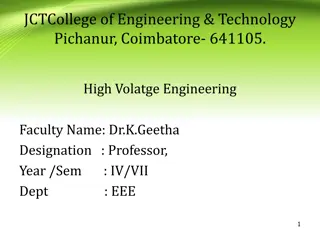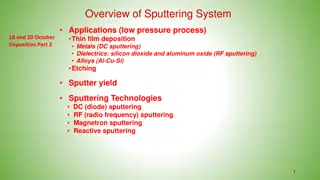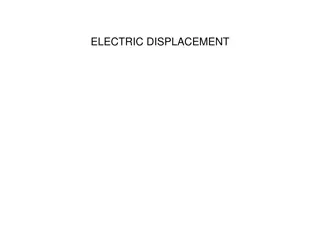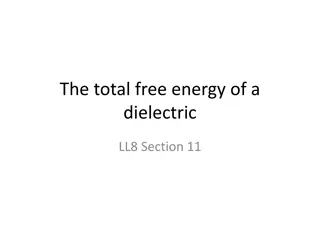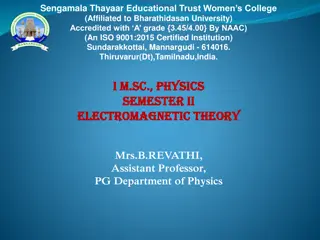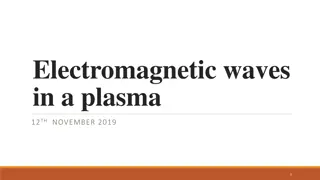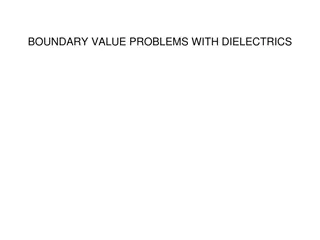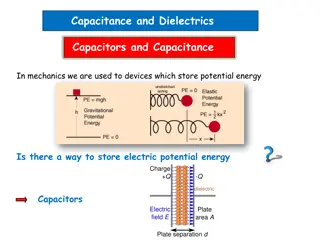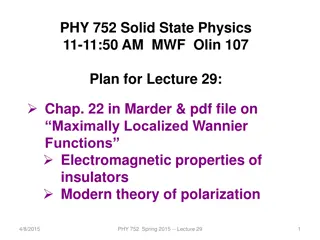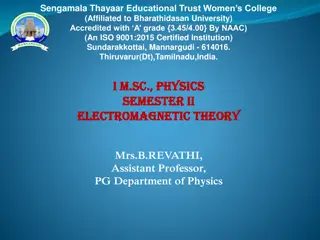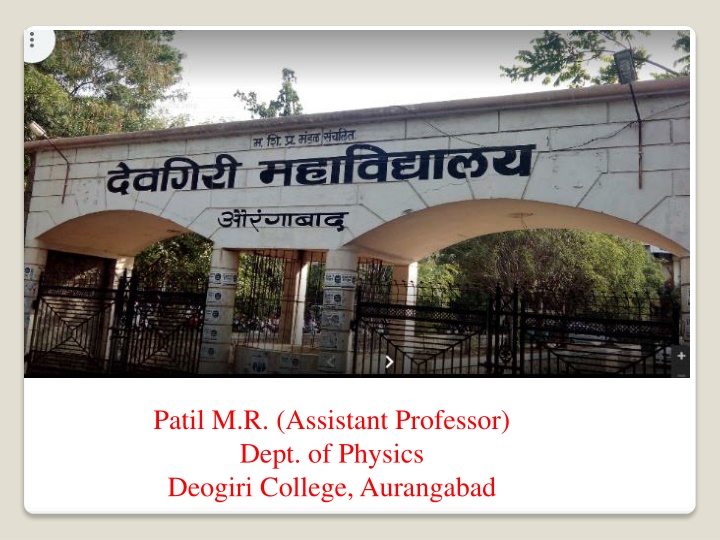
Dielectrics: Introduction and Characteristics
Explore the world of dielectrics, including their definition, properties, dielectric constant, and molecular views. Learn about polar and non-polar dielectrics and their significance in the field of physics.
Download Presentation

Please find below an Image/Link to download the presentation.
The content on the website is provided AS IS for your information and personal use only. It may not be sold, licensed, or shared on other websites without obtaining consent from the author. If you encounter any issues during the download, it is possible that the publisher has removed the file from their server.
You are allowed to download the files provided on this website for personal or commercial use, subject to the condition that they are used lawfully. All files are the property of their respective owners.
The content on the website is provided AS IS for your information and personal use only. It may not be sold, licensed, or shared on other websites without obtaining consent from the author.
E N D
Presentation Transcript
Patil M.R. (Assistant Professor) Dept. of Physics Deogiri College, Aurangabad
Introduction Introduction Dielectrics are the materials having electric dipole moment permantly. Dipole: Dipole: A dipole is an entity in which equal positive and negative charges are separated by a small distance.. Dipole Dipole moment charges and separation distance b/w them is called Dipole moment. e e= q . x coul m moment ( ( ele ele): ):The product of magnitude of either of the q -q X All dielectrics are electrical insulators and they are mainly used to store electrical energy. Ex: Mica, glass, plastic, water & polar molecules
dipole _ _ + + + Electric field _ _ + _ + + _ _ _ _ + + + Dielectric atom
Dielectric constant Dielectric constant Dielectric Constant is the ratio between the permittivity of the medium to the permittivity of free space. = / 0 The characteristics of a dielectric material are determined by the dielectric constant and it has no units. Dielectric weakens weakens original field by a factor. Some dielectric constants are, Vacuum 1.0 Paper 3.7 Pyrex Glass 5.6 Water 80
Molecular View of Dielectrics Molecular View of Dielectrics Polar Dielectrics: Dielectricswith permanent electric dipole moments. A polar dielectric polar dielectric is one in which the individual molecules possess a dipole moment even in the absence of any applied field, i.e. the center of positive charge is displaced from the center of negative charge. Example: Water
Example: Water Non-Polar Dielectrics: A non molecules possess no permanent dipole moment. The molecules of a substance may be polar or non-polar. In a non non- -polar polar molecule, molecule, the the centers centers of of positive charges charges coincide coincide. . The molecule then has no permanent (or intrinsic) dipole moment. Examples of non-polar molecules are oxygen (O2) and hydrogen (H2) molecules which, because of their symmetry, have no dipole moment. The non-polar molecule thus develops an induced dipole moment. The dielectric is said to be polarized field field. . Substances for which this assumption is true are called linear isotropic dielectrics. non- -polar dielectric polar dielectric is one whose positive and and negative negative polarized by by the the external external
The induced dipole moments of different molecules add up giving a net dipole moment of the dielectric in the presence of the external field. Thus in either case, whether polar or non-polar, a dielectric develops a net dipole moment in the presence of an external field. The dipole moment per unit volume is called called polarization polarization and linear isotropic dielectrics P = Xe E and is is denoted denoted by by P P. For
POLARIZATION POLARIZATION When the atoms or molecules of a dielectric are placed in an external electric field, the nuclei are pushed with the field resulting in an increased positive charge on one side while the electron clouds are pulled against it resulting in an increased negative charge on the other side. This process is known as polarization and a dielectric material in such a state is said to be polarized. There are two principal methods by which a dielectric can be polarized: stretching and rotation. Stretching an atom or molecule results in an induced dipole moment added to every atom or molecule.
Rotation Rotation occurs only in polar molecules occurs only in polar molecules those with a dipole moment dipole moment like the water molecule shown in the diagram below. like the water molecule shown in the diagram below. The molecules of dielectrics are classified into two types. The molecules of dielectrics are classified into two types. 1) Polar molecules 1) Polar molecules 2) 2)Nonpolar Nonpolar molecules molecules 1) Polar molecules: 1) Polar molecules: If two centre of gravity are displaced from each If two centre of gravity are displaced from each other, the molecule as a whole possesses polarity and has a permanent other, the molecule as a whole possesses polarity and has a permanent electric moment and molecule is said to polar molecule. electric moment and molecule is said to polar molecule. Example: CHCl Example: CHCl3 3 those with a permanent permanent Polar molecules generally polarize more strongly than Polar molecules generally polarize more strongly than nonpolar molecules molecules. Water (a polar molecule) has a dielectric strength 80 times that Water (a polar molecule) has a dielectric strength 80 times that of nitrogen. of nitrogen. nonpolar
This This happens happens for First, First, all all molecules molecules stretch or or An An ionic ionic molecule molecule such examples examples of of polar polar molecules for two stretch in in an two reasons reasons one one of of which an electric electric field which is is usually field whether whether they usually trivial they rotate trivial. . rotate not not. . (H2 2O) O) is is such as as HCl molecules. . HCl or or a a molecule molecule of of water water (H
2) 2) Nonpolar Nonpolar molecules coincide in a molecule, the molecule as a whole possesses no coincide in a molecule, the molecule as a whole possesses no resultant charge and it is said to be resultant charge and it is said to be nonpolar molecules: : When two centre of gravity When two centre of gravity nonpolar molecules. molecules. A A non non- -polar dielectric polar dielectric is one whose molecules possess no is one whose molecules possess no permanent dipole moment. permanent dipole moment.

